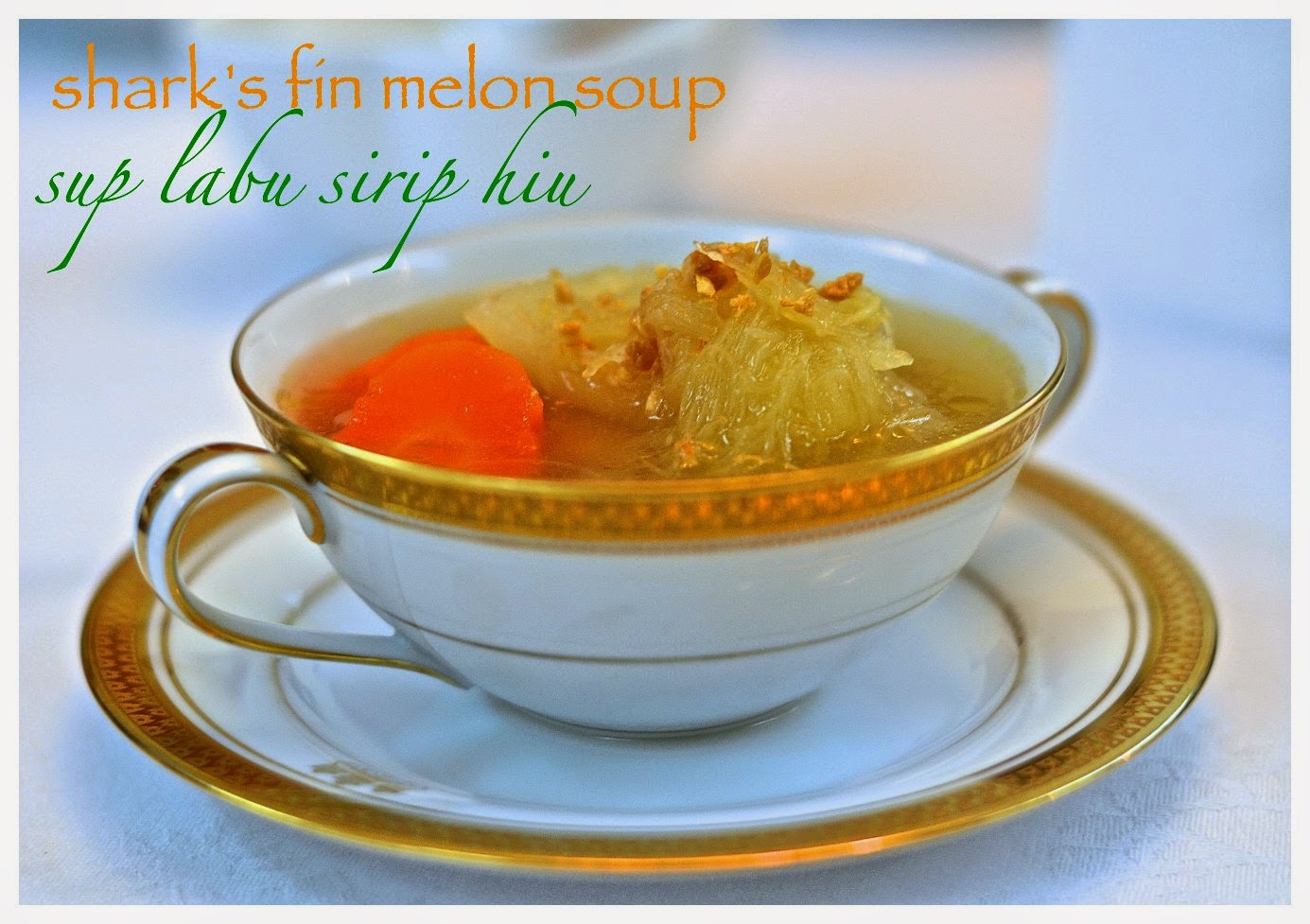Sebagian besar dari kita mengenal sup sirip ikan hiu, yang akhir-akhir menjadi kurang populer karena banyak orang menentang cara mendapatkan sirip hiu (walau masih ada dihidangkan di beberapa restoran). Beberapa waktu yang lalu teman saya memasak sup labu yang bentuk dan teksturnya mirip dengan sirip ikan hiu, walau rasanya tidak mirip dengan sirip ikan hiu tapi lebih menyerupai dengan winter melon atau kundur. Rasanya segar dan bening.
Labu ini dimasak layaknya seperti sayuran untuk sup lainnya. Memasaknya tidak sulit yang penting harus menggunakan kaldu yang bagus dan enak, karena labu ini sendiri tidak berasa, bisa digunakan kaldu ayam atau daging lainnya. Sup ini akan menjadi hidangan yang berbeda dan menarik, terutama bagi yang anti sup sirip ikan hiu.
Labu ini belum banyak / umum dijual di kota Medan, tapi bagi yang ingin mencoba, bisa membelinya di Pasar Beruang dan Supermarket Berastagi di Jl. Gatot Subroto.
Cucurbita ficifolia Like most members of the Cucurbita species, it is a climbing vine that is an annual in temperate climates and a perennial in tropical zones. Unlike some other Cucurbita species, it does not have swollen storage roots. The plant stem can grow five to fifteen meters and produces tendrils that help it climb adjacent plants and structures. It may root from the leaf axils, unlike most other curcubits. The vine can become semiwoody if left to grow perennially, although most commercial plants are annual. Its leaves resemble fig leaves, hence its most common name in English – fig-leaf gourd – and its Latin species name (C. ficifolia which means fig leaf). The fruit is oblong, resembling a watermelon, with wide black seeds. In stark contrast to other Cucurbita, its fruit is highly uniform in size, shape, and color.
The plant is monoecious with imperfect flowers (meaning its flowers are either male or female but both sexes can be found on the same plant) and are pollinated by insects, especially bees. The color of the flowers is yellow to orange.
The fruit is oblong with a diameter of eight inches or 20 centimeters, weighs eleven to 13 pounds (5 to 6 kilograms), and can produce up to 500 seeds. Its skin can vary from light or dark green to cream. One plant can produce over 50 fruit. The fruit can last without decomposing for several years if kept dry after harvest.(Wikipedia)
Uses
The flowers, leaves and tender shoots are used in Mexico and other countries as greens. The most nutritional part of Cucurbita ficifolia is its fat- and protein-rich seeds, which can vary in color from white to black. They are used in Mexico to make palanquetas, a sweet similar to peanut brittle. The fruithas several uses as food. The immature fruit is eaten cooked, while the mature fruit is sweet and used to make confectionery and beverages, sometimes alcoholic. The fruit is low in beta-carotene—as can be seen from its white flesh, relatively low in vitamins and minerals, and moderately high in carbohydrates.
In Europe: In Spain this squash is used to make a jam known as "cabello de ángel" (angel's hair), "cabell d'àngel" in Catalan, that is used to fill pies, sweets and confectionary. In Portugal, where the fruit is known as "chila" or "gila", it is still used extensively in the production of traditional Portuguese sweets and confectionery; it was also used as a crop for non-human consumption in order to feed pigs.
In Latin America: In Chile and Argentina, jam is often made out of the fruit of "alcayota" or "cayote". In Costa Rica, it is traditional to make empanadasstuffed with sugared "chiverre" filling at Easter time.
In Asia, the pulp strands are used to make soup, quite similar to shark fin soup, hence the name "shark's fin melon". The cultivation and this usage feature briefly in the film Grow Your Own. Across Asia, eating this melon is also said to help people with diabetes. Several scientific studies have confirmed its hypoglycemic effect. It is used effectively to treat diabetes due to its high D-Chiro-Inositol content.
The vine and fruit are used for fodder. Because of its ability to keep for a long time, the ripe fruit was taken on voyages on ships, and used for food for livestock on board.
Bahan - Bahan / Ingredients
3 L kaldu bening dan bagus, sesuai pilihan anda (saya memakai kaldu ayam kampung)
3 L very good and clear stock of your choice
3 wortel besar
3 large carrot
1 buah labu sirip hiu
1 shark's fin melon
garam dan merica secukupnya
salt and paper to taste
Bawang merah goreng atau bawang putih (optional)
Onion atau garlic flakes (optional)
Cara memasak / Preparation
Kupas labu, potong-potong kira-kira berukuran 2 x 3 cm atau sesuai selera anda.
Peel the melon, cut into small pieces approximately 2 x 3 cm or to your preference
Buang isinya, sisihkan
Remove the seeds, set aside
Kupas wortel, potong kira-kira sepanjang 2 cm
Peel the carrots, cut into 2 cm long pieces
Didihkan kaldu, masukkan wortel dan melon, tambah garam dan merica secukupnya
Bring the stock to a boil, put the carrots and melon, add salt and pepper to taste
Masak sampai lembut, sebagian potongan labu akan terurai seperti sirip ikan hiu.
Cook until the carrots and melon is tender and most of the melon will disintegrate similar to shark's fin strand.
Sajikan selagi panas, taburi dengan bawang goreng.
Serve while the soup is hot, sprinkle with garlic or shallots flakes







No comments:
Post a Comment